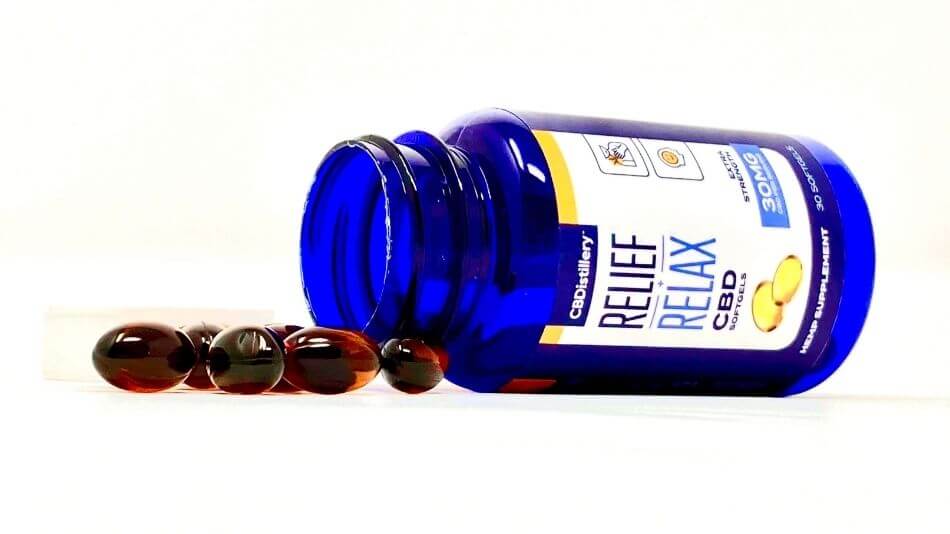The endocannabinoid system is a complex and mysterious part of the human body. It influences an array of standard bodily processes, but how, and to what extent?
The endocannabinoid system is indeed responsible for all sorts of functions and processes that keep your body moving and working. It exists even if you don’t use cannabis products because the body produces similar molecules all on its own. The ECS and its natural function help maintain homeostasis.
Therefore, the role of the ECS is relevant not just to those who regularly consume cannabis but to the general public as a whole. Some research suggests that a lack of endocannabinoids or a deficiency in the body may be to blame for some of the most common chronic conditions. Understanding the ECS is crucial for the world of cannabis and CBD and the world of medicine, pain management, and stress management as a whole.
Endocannabinoid System Explained
Many of us are familiar with cannabinoids – THC and CBD, for example – and the effects on the body and mind, but truly understanding how cannabis impacts us involves understanding the endocannabinoid system (ECS) as well.
The endocannabinoid system is a complex, unique, and essential cell-signaling system. The endocannabinoid system exists in the human body regardless of whether or not you consume cannabis. It plays a fascinating role in regulating various bodily functions, including appetite, sleep patterns, and mood. Learning more about the endocannabinoid system stands to benefit individuals from all walks of life. Interacting with the endocannabinoid system offers a unique chance to treat symptoms of both mental and physical health concerns.
Research on the ECS is still foundational in many ways, as is research on cannabis use in general. So far, though, the ECS is known to have a hand in various bodily functions, including:
- Chronic pain and inflammation
- Metabolism
- Digestion and appetite
- Relief from insomnia (easier time falling and staying asleep)
- Stress management
- Muscle and bone growth
- Memory
- Motor control and coordination
Because the ECS is involved in so many critical bodily functions (specifically those that help preserve your physical and mental wellbeing), researchers believe that its primary function is to maintain homeostasis. Homeostasis refers to your body’s ability to care for itself and the stability of your body and its operations.
Interestingly, some researchers suggest that an endocannabinoid deficiency may be partially to blame for some chronic conditions, though this statement has yet to be fully explored. Though it may not be sure, it is undoubtedly interesting to consider the possibilities that understanding the ECS may unlock not just for cannabis users but also for society.
As mentioned, cannabinoids like THC, CBD, and other similar compounds can interact with and bind to receptors in the ECS, which is why we experience the widely known effects of cannabis products. Of course, different cannabinoids can affect bodily functions in different ways, and no two people will react to any cannabinoid dosage the same way.
If you’re new to cannabis, understanding the ECS is a significant first step to understanding all of the benefits you can reap from your products. Even if you’re an experienced user, it’s worthwhile to educate yourself; the full potential of the ECS has yet to be fully discovered, and, as a result, consistent pushes for more research in this particular area are necessary.

What are the three parts of the endocannabinoid system?
As discussed, the endocannabinoid is a complex system. Its presence permeates throughout the entire body and mind, and it can influence all sorts of bodily functions. It can be hard to envision how one single system is capable of so much, but breaking the ECS down a bit helps make things a bit more clear.
The endocannabinoid system consists of three main components:
- Receptors. Within the endocannabinoid system (throughout the body) exists a diverse and sizable network of cannabinoid receptors, specifically including cannabinoid receptor type 1 (CB1) and type 2 (CB2)
- Endogenous cannabinoids (also known as endocannabinoids). Our bodies produce endocannabinoids in response to various bodily processes, including hunger, mood, and others. A prime example of an endocannabinoid is anandamide (AEA, discussed in more depth later on).
- Enzymes. Enzymes are important players when it comes to creating a bodily reaction to any substance you take in. In the context of the endocannabinoid system, endocannabinoid metabolic enzymes are perhaps most relevant.
Your body produces endocannabinoids in response to a need, or to outside stimuli (feeling hungry when you haven’t eaten for a while, for instance). Once released, endocannabinoids trigger cannabinoid receptors in the body and cause them to activate. This process is responsible for many processes involved in maintaining homeostasis.
CB1 and CB2 receptors, as mentioned above, are two primary and vital cannabinoid receptors. CB1 receptors, which are primarily located within the nervous system, behave differently than CB2 receptors, which are mostly found in immune systems. These receptors are present in other cell types, but we’re primarily interested in the most significant roles.
All sorts of things can trigger the release of endocannabinoids (and, as a result, the activation of cannabinoid receptors). Exercise, or a lack thereof, and varying stress levels are just two examples of situations that might kick start the process.
Know it or not, the ECS is constantly functioning within your body and helping create and color the life you live. Because a potential endocannabinoid deficiency is hypothesized to be at least partially responsible for a variety of chronic health conditions, fully harnessing its capabilities stands to benefit society for generations to come.
How does the endocannabinoid system work?
With a thorough understanding of the components that make up the endocannabinoid system, you’ve already set yourself up to understand how cannabis works explicitly to activate it.
There are several subclasses of cannabinoids to consider, including:
- Cannabidiol (CBD)
- Tetrahydrocannabinol (THC)
- Cannabinol (CBN)
- Cannabinodiol (CBDL)
- Cannabichromenes (CBC)
- Cannabitriol (CBT)
- Cannbigerols (CBG)
- Cannabicyclol (CBL)
- Cannabielsoin (CBE)
As mentioned, these cannabinoids work by interacting with specific receptors. These receptors exist on the surface of cells throughout the body. The effects associated with cannabinoids depend on the specific receptors and parts of the brain coming into play. Some cannabinoids affect motor functions, coordination, and memory; others affect reward and pleasure responses in the brain.
The primary way that these cannabinoids differ, aside from their differing molecular makeup and tendency to bind with specific receptors, is based on the degree of psychoactive activity they cause. Cannabinoids like CBD are known as non-psychoactive molecules because they do not impair vital bodily functions like coordination, cognition, and reaction time. Others, like THC and CBN, have varying degrees of psychoactive potential.
Once a cannabinoid has bound to a receptor and enzymes have come into play, the process that produces your desired effects begins. A cannabinoid is almost like a key that can only fit into a specific lock – one that leads to a doorway full of positive and beneficial side effects. The body produces cannabinoid-like molecules naturally that interact with the ECS to control many bodily functions. This phenomenon is discussed in more depth later on.
As a reminder, the ECS exists and functions regardless of your cannabis consumption. Cannabis doesn’t interact with the body in any unnatural or harmful ways. You can think of it as a chemical process just like many others in the body.
Endocannabinoid System Research
As of right now, it seems that researchers may be primarily focused on understanding the potential therapeutic or healing effects of cannabinoids, especially as cannabis and CBD products have risen as an acceptable and effective medical treatment for many. We also understand some cannabinoid receptors and endocannabinoids (like CB1 and CB2) better than others.
In the past, researchers believed that cannabinoids impacted the body by disrupting cell membranes (thanks to their lipophilic nature). But, in reality, THC and other cannabinoids bind to specific receptors within the brain and body. Though it may seem obvious now, coming to this realization was an essential shift in rhetoric and thought for many researchers. It fundamentally changed the way that we understood cannabis and how we might use it.
An exciting area of development is our understanding of a specific endocannabinoid: CB1R. CB1R primarily impacts the brain, but it’s present in many other parts of the body as well. As a result, it is specifically and definitively responsible for various bodily processes, including:
- Mind
- Memory, cognition, and learning
- Sleep patterns
- Anxiety, depression, and other mental health symptoms
- Appetite and diet
- Motor control and coordination
- Neural development
- Addiction (specifically your mind’s tendency to reward itself after using addictive substances)
- Liver
- Insulin resistance
- Fibrosis
- Cardiovascular health
- Muscle formation
- Digestive processes
- Reproductive health
- Fertility regulation
- Embryo implantation and development
- Misc.
- Nausea
- Cancer
- Bone remodeling
CBR1 is a “mediator” of the psychoactive effects of THC. In other words, CBR1 is the endocannabinoid that interacts with THC to produce the results that we associate with a cannabis-induced high.
Interest in CBR1 is, unsurprisingly, on the rise, especially as marijuana becomes legal in more and more places. It has the potential to be utilized medicinally in the future to treat a variety of ailments. Researchers are also interested in understanding the potentially harmful side effects of such treatment. Others are interested in less popular and less explored cannabinoids, and many of them have yet to be studied in great depth. We may discover other important endocannabinoids or parts of the process that we can also use for good.
It follows, then, that another area of research is understanding how to activate and manipulate the ECS to benefit oneself (therapeutically or medically) even without ingesting cannabis in any way. For the time being, though, the primary way to reap the benefits the ECS has to offer in terms of internal stability is to utilize cannabis products. CBD products have the potential to impact the body in many of the ways listed above; it has the potential to impact not just your mental state, but your physical state as well.
Those who live with chronic health conditions, including chronic pain and inflammation, arthritis, insomnia, anxiety or depression, and others are perhaps those who stand to benefit the most from cannabis use. Whether or not a lack of endocannabinoids is truly to blame in any way for the ailments that we experience in life may be a question that goes unanswered for some time. What we do know is that CBD and other cannabinoids can legitimately benefit you and your health.
When was the endocannabinoid system discovered?
Our modern understanding of the endocannabinoid system is much more recent than you might anticipate. Lumir Hanus, an analytical chemist, discovered the first endocannabinoid in the human brain in March 1992. The endocannabinoid that Hanus and his peers discovered, anandamide, was significant for many reasons, perhaps most obviously because it demonstrated that the human brain did produce cannabinoid-like molecules of its own.
These cannabinoid-like molecules can and do bind with endocannabinoid receptors throughout the body and mind. By now, we’ve established that cannabinoid receptors can interact with or be involved in all sorts of critical daily functions (motor functions, memory, appetite, coordination, pain, etc.). Hanus’ research, alongside research that has emerged in recent decades, has done a great deal to pave the way for medicinal and personal cannabis use. With a better understanding of how cannabis interacts with different parts of the body, we can now better predict how cannabis might help or harm an individual based on the health goals they’d like to achieve.
Before Hanus’ revolutionary work, we understood little about the endocannabinoid system, cannabinoids themselves, and the cannabis plant. Hanus and his peers continue to research the ECS and cannabinoids to this day. However, Hanus has redirected his focus to understanding other parts of the cannabis plant and how they operate in the body.
Fortunately, we’ve come a long way since March 1992. Things in the world of cannabis have been accelerating especially rapidly in some areas – CBD hitting the mainstream market and being successful has turned cannabis from something to avoid to something to seek out for many. The future of cannabinoid-related research is bright, especially as laws surrounding cannabis, hemp, CBD, and other derivatives begin to loosen.
Because the ECS is so large, it may take several decades or longer to unpack all that it has to offer fully. It truly is an evolving field that has a lot of potential for growth and opportunity. Understanding the ECS only makes cannabinoids an even more attractive treatment option for chronic illness. It’s sort of like being able to manipulate a computer’s functions – understanding all of the individual pieces is important, but so is understanding how they all come together.
Researchers like Hanus can also help provide some insight into the future of cannabis. As Hanus states, the future of cannabis research is likely to go in a couple of directions, including marketing derivatives of active compounds within cannabis plants. On the other hand, it’s also possible that the future of cannabis research lies primarily in the medical field. The medical field may be the most equipped to fund and jumpstart research.

How does CBD work with the endocannabinoid system?
If you’ve used CBD before and experienced its positive benefits, you have the ECS to thank for your experience. Without the ECS, the effects of and experiences we associate with CBD would not be possible. CBD binds to both CB1 and CB2 receptors in the body to impact the nervous system and immune functions. Researchers also believe that CBD can activate multiple pathways at once, thus affecting different parts of your body simultaneously.
This reality is responsible for the specific benefits that come alongside CBD use, including:
- Pain relief and lessened inflammation- Inflammation is an immune response, so CBD has the potential to address and treat it directly. Inflammation in various parts of the body, including muscles, joints, and injuries, is responsible for many cases of chronic pain. CBD’s ability to interact with the central nervous system also explains why it’s such an excellent treatment for conditions characterized by pain.
- Stress relief. Again, CBD interacts with various parts of the body, including the central nervous system and the mind. For many people, using CBD products is a form of self-care – they’re great at promoting relaxation and tranquility, two things that can be very difficult to come by.
- Addiction treatment. Though research in this area is still evolving, some health professionals believe that CBD can help treat symptoms experienced by individuals recovering from substance addiction. Even if CBD doesn’t make symptoms go away, it can go a long way in helping an individual manage the discomfort, pain, or emotional distress that come along with recovery.
Interestingly, CBD works to impact the ECS very differently than THC. THC is an agonist to CB1 receptors, while CBD is an inverse agonist. In other words, they quite literally operate as total opposites at the molecular level. Fortunately, though, these two cannabinoids tend to produce the most beneficial effects when combined; CBD can help curb some of the adverse side effects of THC use, like anxiety or paranoia, among other examples.
So, CBD has a unique role. It doesn’t wholly mimic THC, and it doesn’t produce a psychoactive high, but it does produce a variety of positive side effects. Other cannabinoids and parts of the cannabis plant (i.e., terpenes) also come into play when using some CBD products, specifically those that are full-spectrum.
The entourage effect suggests that consuming CBD combined with THC is the best way to reap the most benefits you can from your cannabis experience, but THC is still illegal in many places. Those looking to get the whole experience can favor full-spectrum products for this reason, but others might prefer products containing only CBD. CBD products contain CBD from legally grown, legally processed hemp plants (which contain 0.3% or less THC). These products include trace to no THC, but those looking to avoid THC completely should opt for CBD isolate products instead.
If you have access to a medical marijuana program in your area and can take advantage of it, you might find that products with THC and its derivatives are better or worse than CBD on its own, depending on your specific goals and circumstances. No matter how you obtain access to CBD, though, you can rest assured that it’s a safe product that interacts with a natural, pre-existing system in your body.
Conclusion: An Important and Complex Bodily Process
Describing the ECS in just a few words or even sentences isn’t easy; after all, it’s an incredibly complex system that stretches all across the body. It constantly functions even if you’re not actively stimulating it, and it is responsible for regulating many of the functions and feelings we deal with daily. As a result, research into the benefits of manipulating the ECS and studies that seek to understand the entire character of the system are on the rise.
Those who use CBD products or other cannabis products are perhaps those who stand to benefit the most from coming to understand their own ECS. Different cannabinoids and parts of the cannabis plant can influence your mind and body in their own unique ways, so it does pay off to take the time to get to know the products you’re using. Because everyone’s ECS is different, so too is their reaction to various amounts of additional cannabinoids.
Though it might seem overwhelmingly complicated, the ECS consists of three main components: endocannabinoids/cannabinoids, receptors, and enzymes. The body naturally produces endocannabinoids in response to either a perceived need or an outside stimulus, but cannabinoids can come from cannabis products. Endocannabinoids share many of the same properties as cannabinoids, but again, they continue to exist no matter how much or how little cannabis you consume.
Receptors are sort of like the finish line for endocannabinoids and cannabinoids. Receptors, which exist throughout many parts of the body, including the central nervous system, are necessary for chemical bonding. Enzymes can help kickstart reactions and speed things up.
Once you’ve gotten to know and understand it, the ECS isn’t so different from many other systems in your body. Molecules react with one another to produce an effect that you feel either physically or mentally. Because the ECS is a natural part of our bodies, some might find comfort or peace of mind in knowing that cannabinoids aren’t foreign substances. If you’re hesitant about implementing CBD into your routine because you’re not entirely sure how it works or how it might impact your body, you can rest assured that CBD is safe and relatively unlikely to cause adverse side effects.
Taking advantage of all that the ECS has to offer means, for many, using high-quality and reputable CBD products. Our directory lists some of the best, most carefully crafted, and trustworthy brands and products on the market to save you the hassle of searching through a sea of options on your own. Seeking out products that are made well and come from good sellers is perhaps one of the easiest ways to get in touch with your ECS and experience all of its potential.










